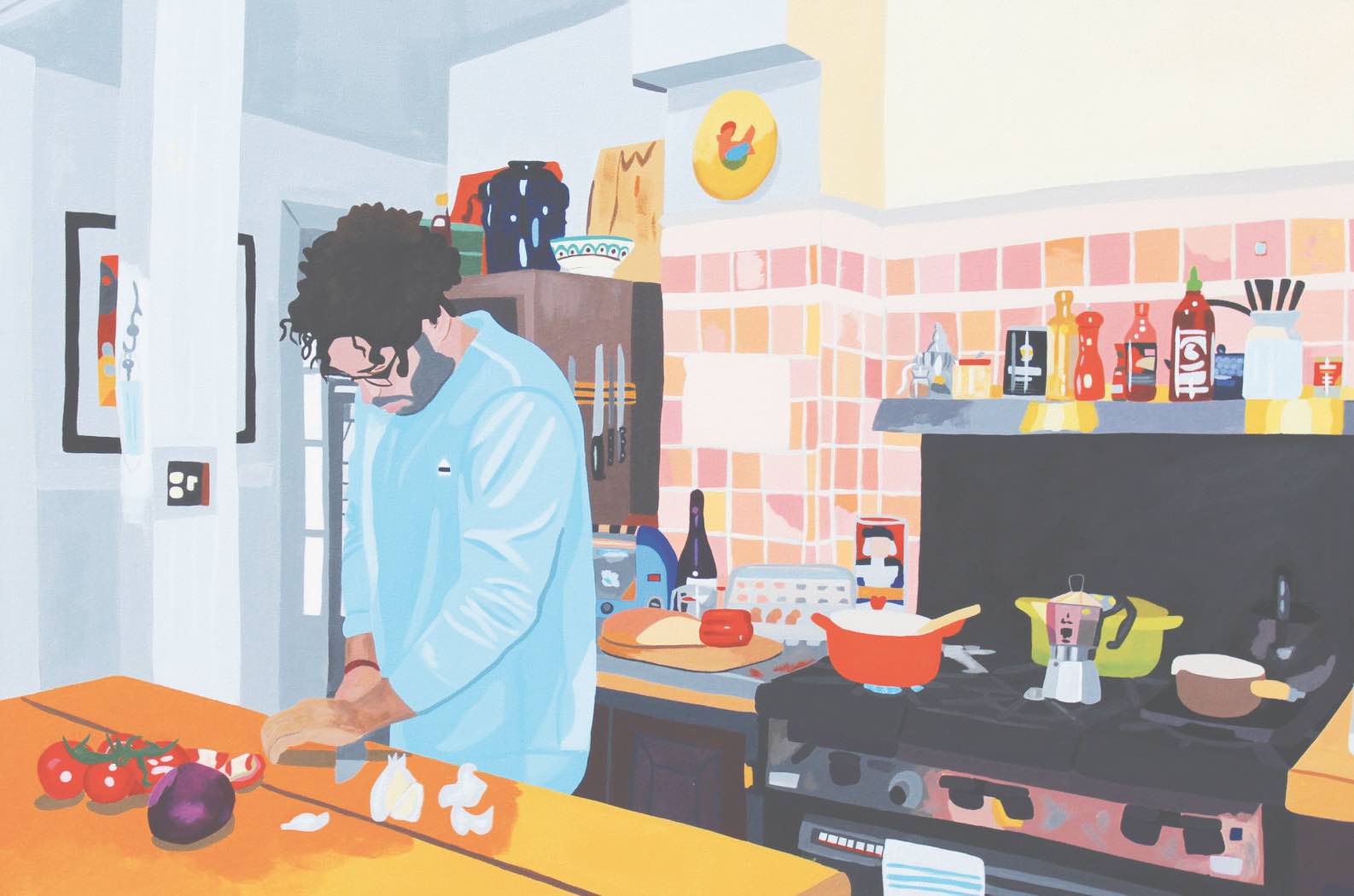Ava Jackson ’20 reflects on painting post-graduation
February 19, 2021
Ava Jackson ’20 believes that artists are examiners. Artists are constantly taking in the world around them, watching how it works and determining how it could be reflected in art. During a pandemic, though, options for watching the outside world have been limited.
“Everything exists in this different context,” said Jackson in a Zoom interview with the Orient. “It’s really hard to be grounded in reality because we’re losing some sense of what that is for each other—we’re all existing in isolation.”
Jackson graduated from Bowdoin in May with a major in anthropology and a minor in visual arts. She now lives in northern New Hampshire, where she has been working and painting—acrylic on canvas is her preferred medium.
Jackson fell into the Bowdoin art scene somewhat by accident. While she first found herself picking up visual arts courses to take with friends, she soon began more seriously considering the subject as a minor. She cites A. LeRoy Greason Professor of Art Mark Wethli as a significant influence for her during her Bowdoin artistic career
“[Wethli] was very encouraging of my pursuit of art,” Jackson said “[Art] was something that I loved doing, but without [his] external push for me to continue, I don’t know if I would have.”
The pandemic has allowed Jackson to discover new ways of creating art. Immediately after she graduated, Jackson was granted an Employment Accelerator Award from the Career Exploration and Development Center (CXD). Under the mentorship of Portland-based artist Tessa Greene O’Brien, Jackson spent the summer pursuing art more seriously than ever before.
“That [opportunity] really encouraged me to continue working on [my] art—working on a series that had started during an independent study at Bowdoin during my last semester. And that just kept the ball rolling for me,” said Jackson. “If I had not come home from graduating and set up a studio and found space and found time and a way to interact with my art, I think that it would have gone on the back burner.”
While the pandemic has given Jackson more time to work on her art, it has also presented her with challenges.
“[The pandemic] has not given me as much inspiration as I’d like. I mostly paint interiors, and one problem with COVID[-19] is that we’re existing in very few interiors.” said Jackson. “Even though I do find a lot of inspiration in the everyday kind of existence, it’s starting to get old, and I’m starting to repaint some of the same subjects. I want new people, and I want new places and I want more inspiration.”
Jackson has also begun selling some of her work on Redbubble, an online print marketplace. Even so, sales aren’t her primary focus.
“It’s really important for early artists to just establish their niche and not focus on commodifying their art. The kind of art that I make right now, it’s not art that sells,” Jackson said. “The kind of art that sells is paintings of alcohol bottles; it’s not the stuff that I really care about. Most of my work is about labor, and no one wants to buy a greeting card with a gas station employee on it.”
Jackson’s current series on labor, a collection of eleven paintings, first started in the fall of her senior year, when Jackson painted a friend and co-worker working in the dining hall.
“It just became kind of a motif in my art—people doing an everyday job or everyday activity; someone who is focused on whatever craft that they have in front of them,” said Jackson.
Her favorite piece from her own portfolio is “Adrián,” a colorful portrait of a friend making breakfast in a brightly lit kitchen, backed by splashes of pink and orange tile.
“I worked through every element of it: the subject, the context, all of the placement of everything,” said Jackson.“I worked with a palette and staged it in a way that I just think I wouldn’t change anything about it.”
 "Adriàn;" Courtesy of Ava Jackson '20
"Adriàn;" Courtesy of Ava Jackson '20Jackson hopes to continue her work as an artist, although she does not know what lies ahead. She noted that context—such as time and income source—plays a huge role in how art can be created. Regardless of her future, Jackson plans to continue making room in her schedule for creating art.
“I think one thing that I’m continually feeling about my art is that I’m not done yet,” Jackson said. “There’s always more that I want to do.”

Comments
Before submitting a comment, please review our comment policy. Some key points from the policy: